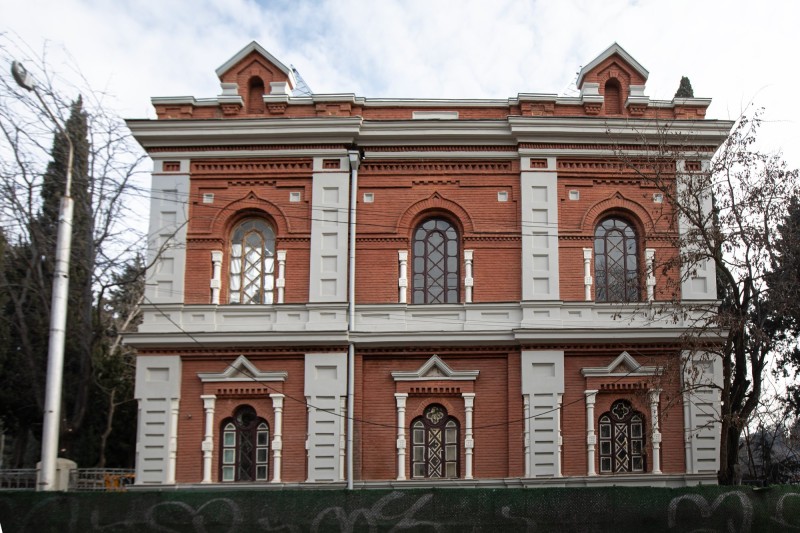Information in details
The Caucasus Silk Station, located at 6, Tsabadze St, was founded in 1887 by the initiative of the famous naturalist, member of the Committee of the Imperial Moscow Agricultural Society, Nikolai Shavrov. From the beginning, the current building was intended as the main station of the Caucasus silk-making complex, which would house the silk museum, scientific-research laboratories and others. The architect of the building is Alexander Shimkevich (Aleksander Szymkiewicz), a native of Poland, who, from the stylistic point of view, constructed a building with a combination of elements of eclectic, Russian classicism and Islamic, Renaissance architecture, the construction material of which is red brick. Relief, simple ornaments of cornices and facades are also made of brick. Decorative pilasters, which were originally decorated with geometric ornaments, are plastered. The interior decor, in which decorative motifs of silkworms, butterflies, and mulberry leaves are used, directly indicates that the building was specially built for the silk museum in the 19th century, which makes it completely unique. It is significant that the original furniture of the entire exposition of the museum and the library, made according to Shimkevich project, has survived. The Caucasus silk-making complex also included the building in front of it, which is currently located on the corner of the park and the street.


 თბილისი, Tsabadze Street N6
თბილისი, Tsabadze Street N6
 41.7218385, 44.7883071
41.7218385, 44.7883071




